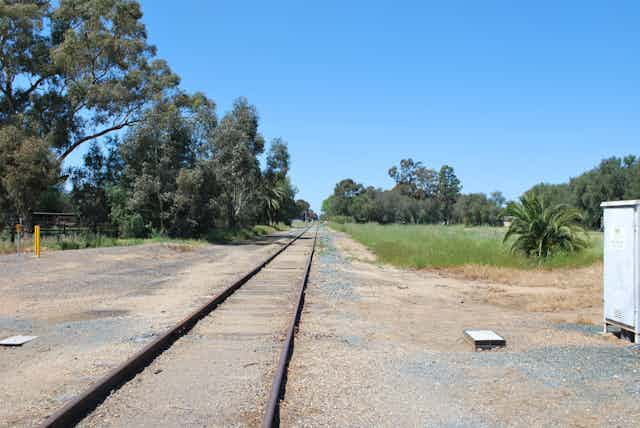The front-page headlines generated this week by Prime Minister Malcolm Turnbull’s promise to link Australia’s major eastern cities by fast rail may be seen by many voters as yet another major infrastructure pledge made hurriedly in the run-up to a federal election that is likely to evaporate just as quickly afterwards.
Fast intercity rail certainly has form when it comes to being put on the table only to be whipped away again. Linking Australia’s two biggest cities by rail would be in the same nation-building category as the Snowy Mountains Scheme, yet we have been talking about it for decades without actually doing it.
How different might things be now if Australia had built the Very Fast Train (VFT), first proposed in 1984 by the then CSIRO chairman, Paul Wild. The plan (on which I worked) attracted the support of leading companies of the day, including BHP and Elders IXL, but was bogged down in taxation issues and eventually scrapped in 1991.
If it had gone ahead, we would have had an infrastructure capable of shaping the new century for Australia’s densely populated east coast, instead of still waiting for it today.
The route
The first choice was a coastal route running from Melbourne through the Latrobe Valley (and what a boost that would have been to a region that even then was struggling with its over-reliance on brown coal), the Gippsland lakes (with a branch line to the mountain resorts), the southern New South Wales coastal towns and into Sydney via Wollongong (a rust-belt city at that time that would also have benefited from this investment).
This was later replaced by an inland route identified by the CSIRO and the VFT consortium, after a series of localised environmental protests. Canberra became one of the designated stations on the inland route and the rest is history – there has never been a return to the original route, despite the fact that more than 90% of Australians live near the coast.

The funding
Perhaps unsurprisingly, finance was the original project’s downfall. It became a private-sector joint venture in 1987 but collapsed in 1991 when the federal government decided against easing the tax burden on the project’s initial major outlays in return for higher tax overall.
Australian governments have struggled ever since to find ways for public-private partnerships to fund big projects. Until now, perhaps.
This time around, Turnbull has touted the prospect of “value capture”: the financial benefit that the private sector could gain from the boost to urban development around stations – as seen, for example, near Japan’s Shinkansen (bullet train) stations.
In tax increment financing (TIF) schemes, which are more common in the United States for financing infrastructure projects, value capture by governments via increased property rates and taxes has provided a basis for public sector funding. But this has not proved popular in Australia.
The challenge
We have even more urban and regional challenges than we did three decades ago. Sydney and Melbourne are each facing rapid population growth and will need to avoid the damaging consequences of urban sprawl and car dependence. Both cities will need to redirect growth inwards, to brownfield and greyfield sites.
Another consideration is how to disperse the population into regional cities, so these areas can also benefit from improved economic activity. Fast rail can potentially help regional cities become part of a “mega-metropolitan” economic region.
For example, a 350 km per hour service connecting Melbourne with Geelong, Ballarat, Bendigo and Warragul would transform these provincial centres into the equivalent of Melbourne’s middle-ring suburbs, where 30-minute commutes are the norm.

This route would also be the beginning of an inter-capital fast rail route, from Melbourne to Canberra (possibly via Shepparton), and then running through various population centres, via Badgery’s Creek (Sydney’s proposed second international airport) to the Sydney CBD.
The carbon case… and a bump in the track
Almost 8 million passengers flew between Melbourne and Sydney in 2015, making this route the world’s fourth busiest (ahead of Beijing-Shanghai). The carbon savings from a Melbourne-Sydney fast rail link therefore represent a major potential reduction in greenhouse emissions, especially if it is powered significantly by renewable energy.
This obviously wasn’t part of the business case back in the 1980s. But in 2016 it is surely a candidate for the federal government’s Emissions Reduction Fund.
The government’s proposed value capture funding model has a sting in the tail. Privately held land near the rail link and its stations will need to be rezoned and handed to private firms to build facilities (and surrounding developments) that they would then own and operate.
Land acquisition, even with compensation at market value, is generally not welcome in Australian cities. This is just one example of what makes transformational urban change so hard. But this kind of transformation will be critical to the creation of 21st-century cities that are productive, competitive, sustainable and liveable.

